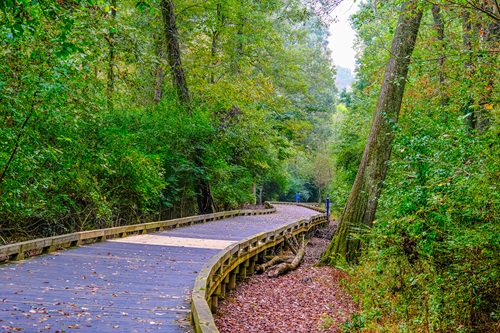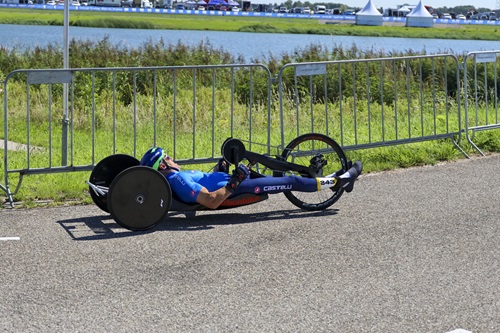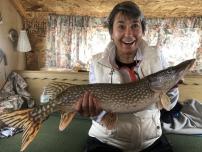
Photo © Jean Schweitzer | Dreamstime.com
Earlier this year, Nancy Hobbs, the founder and executive director of the American Trail Running Association, stated that trail running was on an upward trajectory. That included numbers of races offered, participation in those races and even diversity among athletes.
The corollary is that more trails than ever are being built, and cities are actively seeking them out. Trails not only enhance the quality of life for residents, providing places to run, cycle, walk dogs and even explore on horseback, they are great selling points for areas who want to encourage residential purchases as well as corporate site selection and they are prime economic drivers, hosting races of all types.
And accordingly, cities, when building trails, are working to add the latest and greatest, creating what Singletracks terms “a trail arms race.”

Pocohontas County, West Virginia will be the site of a new trail system for mountain bikes. According to WBOY media, construction is underway on the new “Monday Lick Trail System.” The system will include 27 miles of trails and is being funded by the Appalachian Regional Commission.
This was not West Virginia’s first foray into the trail world. In 2020, the Ride Snowshoe Highlands, which includes the trails at Snowshoe Mountain, was designated as one of only two places on the East Coast at the Silver Level by the International Mountain Bike Association (IMBA). With its newest project, Pocahontas County hopes to achieve Gold Level distinction, of which there are only four places in the U.S.
In Casper, Wyoming, hikers, cyclists and others were looking forward to having more than a dozen miles of new trails to explore, thanks to the ongoing efforts of the Central Wyoming Trails Alliance (CWTA).
Upon completion, CWTA trails director Austin Burgess told reporters, nearly 10 miles of trails throughout the mountain will have been expanded to about 22.5 miles. The roughly 12.5 miles of new trails will span 11 individual trails, with some already open for use.
“We’re more than doubling it,” Burgess said. “It’s a big project.”
Sometimes, cities have plenty of trails but not everyone has a successful access point to them. This was the case on the west side of San Antonio. Now, a project (expected to be completed in the fall) will include a loop trail that could connect to the Howard Peak Trail System, a 100-mile city-wide network of trails.
Urbanize Atlanta noted that the one-upmanship is alive and thriving among areas vying to have the latest and greatest trail, thanks in part to the PATH 400 Greenway:
“First, Atlanta Beltline Inc. officially broke ground two weeks ago on a section of the Northwest Trail in southern Buckhead that will include a standout feature on the 22-mile loop: a suspension bridge high over Peachtree Creek, near Lindbergh.
Now, PATH400 is saying, basically, Hold my beer.”
According to an update from PATH400 spearheads Livable Buckhead, handrails have been added to the soaring Mountain Way Common bridge that help lend an idea just how open and tall the bike and pedestrian infrastructure will be. Denise Starling, Livable Buckhead’s executive director, writes in the latest PATH400 newsletter those safety measures have incorporated taller and sturdier designs than initially planned.”

In the New York Almanac, that state was also trumpeting its successes. A report conducted by Parks & Trails New York (PTNY) and the New York Office of State Parks, Recreation and Historic Preservation (State Parks) showed that statewide greenway trail expansion saw 45.2 new miles of trail completed between January 2023 and June 2024. In coming years, New York will see further trail expansion as 39.4 miles of trail are under construction. An additional 583.2 miles are in various stages of development.
Occasionally, it’s the projects with a smaller footprint that make the biggest difference, though. Birmingham Urban Mountain Pedalers (BUMP), a nonprofit in Birmingham, Alabama, was constructing one of the first hiking trails in the Southeast built specifically to accommodate adaptive bikes, bicycles that have been modified to meet the needs of riders with a disability or mobility issue.
According to Bham Now, “Over the past 30 years, BUMP has developed, built and managed a 30-mile, multi-use trail system at Oak Mountain State Park, turning it into one of the premier mountain bike destinations in the South.”
When it began scouting potential locations for an adaptive bike-friendly hiking trail, BUMP members discovered an excellent opportunity at Tannehill Ironworks Historical State Park, which recently added 1,000 acres of forest land through the Forever Wild Land Trust and provided the perfect place to build Alabama’s first trail optimized for adaptive bikes.
Another adaptive trail network made headlines when it became the first in Vermont to welcome those with impairments. The Driving Range has wider tails that can accommodate adaptive equipment such as handcycles and recumbent tricycles.
Some trail users said that in the past, they did not complain when their equipment was not compatible with facilities, believing that since they were in the minority, their concerns would not be taken seriously.

“Yeah it’s interesting like, I mean, I hate to get like, so cynical, but it's like, a lot of times you feel like a burden, right?” said Greg Durso, who has a spinal cord injury and uses a handcycle on trails. “There's these things that you just can't do, or like, it's hard,” he says. “And I think you, you hide some of those feelings away.”
It was on test-riding The Driving Range, however, that he came into his own, creating a classic case study for user-group feedback when designing sports facilities.
“Greg is the most critical volunteer probably to this project,” said Berne Broudy, the board president for the nonprofit Richmond Mountain Trails. “Because every time we build something, Greg rides it, gives us feedback, we fix it right away, he rides it again, and then we move on to the next spot. That is how we built this network.”

